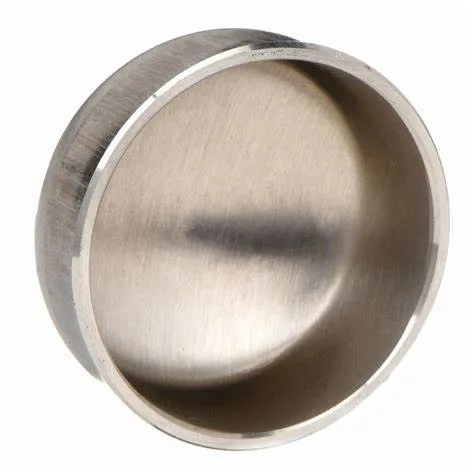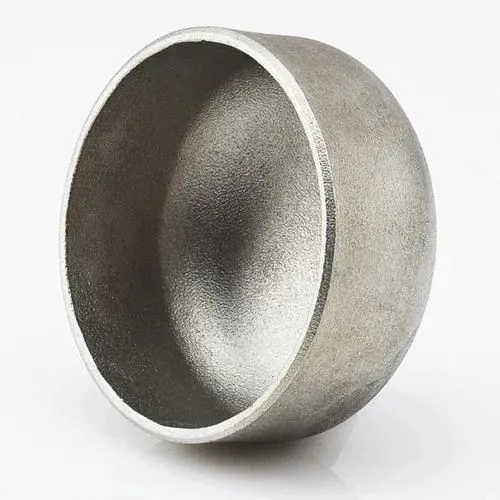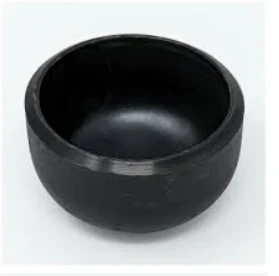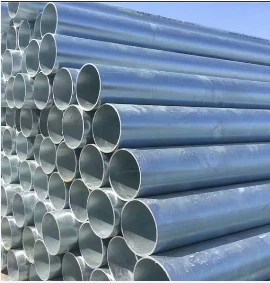JIS B2311 on japanilainen teollisuusstandardi, joka kattaa päittäin hitsattavat putkiliittimet, mukaan lukien putkijärjestelmissä käytettävät korkit. Puskuhitsaussuojukset sulkevat putken pään ja tarjoavat tiivisteen vuotojen tai saastumisen estämiseksi. Tässä on johdatus JIS B2311 päittäishitsaukseen:
- 1. JIS B2311 Standard:
- - JIS B2311 -standardi määrittelee vaatimukset putkijärjestelmien päittäishitsattavien liitososien, mukaan lukien tulppien, suunnittelulle, mitoille, materiaaleille, valmistukselle ja testaukselle.
- - Standardi varmistaa, että JIS-standardien mukaisesti valmistetut korkit täyttävät laatustandardit ja ovat yhteensopivia muiden putkistokomponenttien kanssa.
- 2. Puskuhitsauskorkki:
- - JIS B2311:n mukainen päittäishitsauskorkki on liitin, joka on suunniteltu peittämään ja tiivistämään putken pää turvallisesti, mikä tarjoaa suojaa ja ylläpitää putkijärjestelmän eheyttä.
- - Korkkeja käytetään tilanteissa, joissa putken pää on suljettava joko pysyvästi tai tilapäisesti vuotojen, likaantumisen estämiseksi tai järjestelmän viimeistelyyn.
- 3. Materiaali ja rakenne:
- - JIS B2311 -spesifikaatioiden mukaisia päittäishitsaussuojuksia on saatavana erilaisista materiaaleista, kuten hiiliteräksestä, ruostumattomasta teräksestä ja seosteräksestä, erilaisten käyttövaatimusten täyttämiseksi.
- - Nämä korkit on valmistettu standardoiduilla rakennusmenetelmillä, jotta varmistetaan vahva ja tiivis liitos hitsattaessa putken päähän.
- 4. Sovellus ja edut:
- - Päittäishitsauksilla on käyttöä useilla aloilla, kuten öljy- ja kaasuteollisuudessa, kemiallisissa prosesseissa, vedenkäsittelylaitoksissa ja muilla aloilla, joissa putkien päät on suljettava turvallisesti.
- - Korkit suojaavat putken päitä ympäristötekijöiltä, estävät saastumisen ja auttavat ylläpitämään putkiston puhtautta ja eheyttä.
- 5. Asennus ja hitsaus:
- - Oikeat asennuskäytännöt, mukaan lukien oikea kohdistus, putken pään valmistelu ja hitsaustekniikat, ovat välttämättömiä päittäishitsauskansien asennuksessa tiiviin ja vuotamattoman tiiviyden varmistamiseksi.
- - Hitsaus on yleinen tapa kiinnittää korkit putkiin, jolloin saadaan turvallinen ja pysyvä sulku, joka kestää painetta, lämpötilan vaihteluita ja nestevirtausta järjestelmän sisällä.
- Yhteenvetona voidaan todeta, että JIS B2311 päittäishitsauskorkit ovat tärkeitä osia, joita käytetään putkijärjestelmissä tiivistämään ja suojaamaan putkien päitä turvallisesti. Nämä korkit täyttävät standardoidut vaatimukset laadun, luotettavuuden ja yhteensopivuuden varmistamiseksi teollisissa sovelluksissa, joissa putkien sulkeminen ja suojaus ovat tarpeen.
What Is a Butt Welding Cap and How Is It Used in Industrial Piping?
In industrial piping systems, end-of-line sealing and branch closures require robust solutions. A butt welding cap serves as a critical component for terminating pipes securely. By providing a seamless, welded closure, this fitting maintains system integrity, prevents leaks, and supports compliance with industry standards.
What Is a Butt Welding Cap?
A butt welding cap—also called a pipe end cap or buttweld end cap—is a round fitting designed to close off the end of a pipe. It’s manufactured to match the pipe’s outer diameter and schedule, with either a hemispherical or flat face. To install, both the pipe end and cap are beveled to form a V‑groove, enabling full‑penetration, fusion welds. Common materials include carbon steel, stainless steel, nickel alloys, and other engineered grades, chosen to satisfy pressure, temperature, and corrosion‑resistance requirements.
How Is Butt Welding Cap Used in Industrial Piping?
Butt welding caps find application across oil & gas, petrochemical, power generation, water treatment, and general process industries for both permanent and temporary closures. During hydrostatic testing, technicians install caps to seal off sections of piping while monitoring for leaks. In new construction or retrofit projects, caps terminate branch lines, future tie‑in spools, or dead‑end mains until system expansion. Welders prepare each joint by cleaning and beveling surfaces, aligning the cap precisely, and executing a root pass followed by filler passes per the qualified Welding Procedure Specification (WPS). Post‑weld heat treatment and non‑destructive examination (NDE)—such as radiography or ultrasonic testing—verify weld integrity and compliance with ASME B16.9 and related standards. Additionally, temporary caps enable safe isolation during maintenance, allowing for segment testing and dewatering under regulatory protocols.
Benefits and Best Practices
Butt welding caps offer a smooth‑bore transition that minimizes flow disruption and stress concentration. Their full‑penetration welds deliver exceptional structural strength and leak resistance. To optimize performance, engineers should:
Select caps with matching material grades and wall thicknesses
Adhere to proper bevel angles and joint fit‑up tolerances
Follow qualified WPS protocols rigorously
Consider cladding or protective coatings in corrosive environments to extend service life
Regular inspection and thorough documentation ensure long‑term reliability and safe operation under demanding conditions.
Butt welding caps are indispensable components for achieving durable, leak‑proof pipe terminations in a wide range of industrial applications.
Butt Welding Cap FAQs
What is a butt welding cap?
|
What materials are commonly used?
|
What standards govern butt welding caps?
|
How are butt welding caps installed?
|
Where are butt welding caps typically used?
|
What are the advantages of threaded caps?
|
















